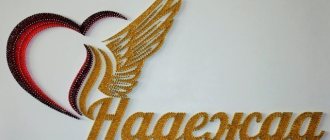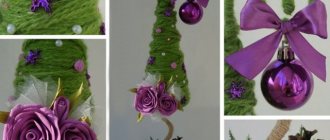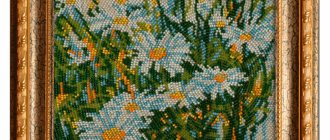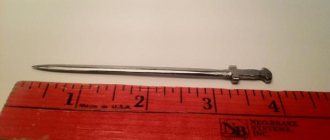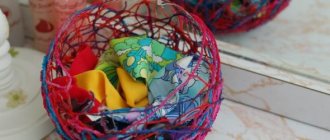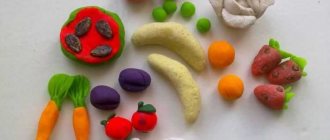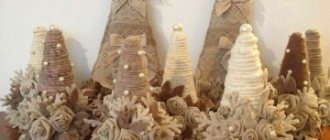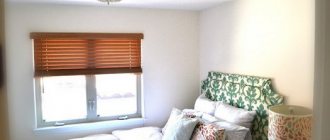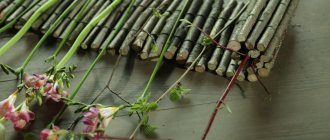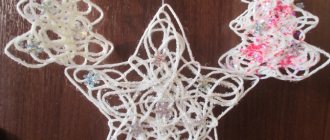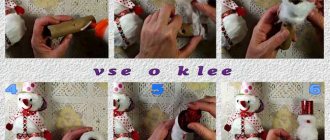Historical reference
When translated from English, the word "String" means "rope", or "string", or "tension". Accordingly, String Art is thread art or a type of isothread. Isothread is embroidery on cardboard, that is, on a hard surface, and String Art is already an interweaving of threads on nails.
Author - Veronica Zapsha (@veronitta)
String Art is not a new creation at all, but it is very famous due to its beauty and originality!
This art came from England. Four centuries ago, English weavers used nails and thread to decorate their homes in this way. They drove nails into wooden planks and pulled threads onto them in a certain sequence. This is how openwork products for wall decoration were obtained.
Then the invented thread weaving technique was transformed and improved with the help of the English researcher Mary Bull. With the help of threads and nails, she taught children algebra and geometry, and thus the string art technique from Mary Bull appeared.
We invite you to watch a short tour of the String Art technique and a master class by Diana Kiseleva:
Basic techniques for beginners
For the first acquaintance with the interesting technique of string art, you should not immediately take on complex compositions. It’s better to start with the simplest techniques, using one color. When choosing, you should pay attention to special stencils, in which each number indicates the order of actions and the type of connection. With them, basic movements are practiced, allowing you to move to a new level of skill. Beginners are advised to fill in corners and circles; other shapes are derivatives and therefore are much easier to master.
Corner
To work using the string art technique, you will need a ruler. Further, all manipulations are performed according to the instructions:
- An angle, obtuse, straight or acute, is drawn on the substrate.
- The figure is divided into equal zones where paired holes are created. The top remains free.
- The thread is threaded from the wrong side, according to the chosen pattern.
Filling a corner cannot be done in such a way that opposite points that are located at the same distance from the vertex are connected.
Arc
This pattern using the string art technique is used for floral designs. It's not difficult to make. All you have to do is follow the instructions:
- Part of the circle is drawn.
- The holes are connected with a thread in such a way that there is less distance between them compared to half the arc.
- Equal spaces are left between the holes.
Drawing using the string art method is done strictly in one direction.
Circle
To complete the work you will need a compass and an awl. A similar element of string art for beginners is made according to the instructions:
- A circle of the required size is drawn. Small diameter is preferred.
- The holes are located in the same way as the numbers on a watch dial; there are 12 of them in total. The holes are numbered.
- A thread is threaded through hole No. 1 and pulled to hole No. 5.
- Holes No. 2 and No. 6 are connected, then No. 3 and No. 7, and then by analogy.
You can connect other points in accordance with the selected patterns. The only rule that cannot be broken in string art is that the distance between the holes should not exceed the diameter of the circle.
Circle
This technique will be required to create beautiful flowers using the string art technique. The figure is performed as follows:
- An arc in the shape of a fan and a small segment are drawn.
- The marks are located at equal distances from each other.
- The holes on the arc and the segment are connected.
The string art method allows you to make flower petals, leaves, and buds. The result is a real floral arrangement that can decorate any room.
Materials and tools for String Art
To create your first painting using the String Art technique, check out the list of necessary materials and tools:
First of all, select a wooden, cork or cardboard base on which you are going to place the drawing. In rare cases, foam plastic or thick cardboard is used (these materials are ideal for mastering thread weaving with children).
Basis for String Art
Rough, unsanded boards were taken as the basis.
As a base - a wooden blank in the shape of a heart
Sandpaper is needed to clean the base for the panel.
A hammer the nails themselves (furniture, carpentry or any other decorative nails are suitable).
There must be a lot of them! Even for the smallest picture you need to prepare at least 20 cloves
Paint , varnish or adhesive film are useful if you need to add color to the base.
When using plywood or a wooden base for painting, a water-based stain is ideal
Threads for winding (knitting threads are ideal in terms of density and color range, but you can also use floss, iris, twisted threads).
It is important that the threads are strong(!), this will make your work easier, because during the weaving process you will not have to tie up broken threads!
Floss threads are often used for winding
Paper template with a design (or dotted diagram). You can download it on the Internet, buy a ready-made diagram in a store, draw it yourself, or take a ready-made image and apply a bitmap to it yourself.
YOU WILL NEED IT
To create a picture from nails and threads, download the templates and diagrams collected in this archive. It's free)
A handle without a rod or other narrowed cavity for more convenient winding of threads (can make the pulling process easier).
See how quickly you can wind threads using this simple tool:
Scissors , pliers (will help if the nail is driven in the wrong place).
Anna art tells how and from what paintings in the style of String Art are made, and where to buy materials for String Art:
Learning the String Art technique for beginners with diagrams
String Art, as a type of art, comes from England. There are two versions of the origin of this needlework method: the first - the founder of String Art is a woman mathematician who taught and explained geometry in this way, the second - this is how weavers decorated their homes.
A panel using the String Art technique can be an excellent gift for a loved one on Valentine's Day or Women's Day. Let's consider the idea of creating a heart-shaped panel: what materials will be needed and directly how to make it. The process is not that complicated, and the result will be stunningly beautiful.
For work you will need the following materials:
- Hammer;
- Decorative nails;
- Plywood (small size);
- Cotton threads;
- Drawing template on paper;
- Sandpaper.
Let's prepare the basis for the future product; for this, the plywood needs to be sanded with sandpaper.
Next, you need to draw a heart template on paper or print it. Despite the fact that this is a very simple element in execution, there are still varieties of shapes, smooth lines, and bends.
In order to choose a heart to your taste, we offer several schemes - templates to choose from.
Once the heart template is drawn or printed, cut it out of paper. Its size should correspond to the size of the plywood. An important step is to position the template strictly in the center on a plywood base, or in another position, but the evenness of the lines still needs to be maintained.
Next, along the entire contour of the heart template, at equal distances, we mark segments with a simple pencil. Now it's time for decorative nails. We nail them on the marked notches very carefully so that the height of all nails is the same. This is a painstaking task, but there is no way to do without it, so we gather all our will into a fist and hammer in the nails.
When all the nails are driven into the plywood, the heart stencil can be removed. Now we prepare the threads for work. First of all, you need to wrap the heart along the contour, and then proceed to parallel winding of the threads. You should try to wind the threads with the same intensity and adhere to strict lines. The winding must be tight to avoid sagging threads, as this can significantly spoil the appearance of the future product.
When the entire area of the heart is filled with parallel lines of threads, choose a different direction and continue winding. Depending on the density of the threads, you should independently adjust the number of winding layers; in our case, there were four layers of threads in different directions.
The result of painstaking work is presented in the photo.
The discount done and the resulting result will, without a doubt, delight your eyes for a long time. This idea of a panel fascinates with its rigor and transparency at the same time. It contains metal in the form of nails, wood, threads - unusual, isn’t it?
Depending on the colors of the threads, the base, the size and texture of the nails, the appearance of paintings in the String Art style can be completely different. To give the integrity of the picture, the heads of the studs can be tinted.
For a detailed study of this technique, we suggest watching several interesting videos in which experienced needlewomen will reveal the secrets of the work and give advice to beginners. You will also be able to see different ideas for creating a heart using the String Art technique. Enjoy watching and good luck in your creativity!
How is String Art useful?
If you decide to make a picture from nails and threads with your own hands, then you will need a lot of patience, attentiveness and perseverance. But the results are worth it: decor using the String Art technique looks very stylish!
Various panels and paintings made in this style will decorate any interior, be it a cozy cafe, kitchen or other room.
Author - Yulia Sorokina (Coton Art)
A cup of coffee
And some more coffee!
Such a homemade gift will surprise and delight anyone, since you definitely cannot buy such a product in a souvenir shop.
Each of us is exposed to various stresses every day: at work, at home, in the family. Weaving from threads and nails has a calming effect on the psyche; this type of art is included in the list of art therapy techniques.
Therefore, as a result of doing crafts in this style, you will not only receive enormous aesthetic pleasure, but will also have a beneficial effect on your emotional health!
Let's start simple
- The easiest type of string art is isothread. Even children and those adults who got a bad grade in drawing at school can cope with this task. All that is needed is to select shades to make the creation harmonious. But monotonous images also look original, so to begin with, you don’t have to be too zealous.
- Experts say that the advantages of the string art technique lie not only in the fact that paintings can decorate any interior, but also in the development of color perception and abstract thinking, the eye. Weaving calms the nervous system, acting no worse than any antidepressant. It teaches children to be persevering, developing their motor skills and increasing self-esteem.
- By the way, despite its simplicity, string art has taken its place in high art. Back in the 70s of the last century, American designer John Eichenger created a whole series of mandalas, which almost the whole world learned about. His works are recognizable because they are distinguished by grace, geometric clarity, and illusions. Thanks to Eichenger, interest in technology flared up with renewed vigor and has not faded to this day.
- Let's try to create a simple picture. Stock up on a wooden or cork base of medium thickness (the selected nails should fit freely into it so that their sharp ends do not show through on the reverse side), paint, nails up to two centimeters long with a small elegant head, strong threads (floss or thin smooth yarn is suitable), hammer, pliers. A pencil, transparent or colored varnish will also come in handy, although you can do without it. If you can't draw a picture by hand, use a stencil. Find a simple image online, print it and trace it.
Basic techniques: angle, circle, circle, arc
Mastering the art of creating pictures from nails and threads starts with learning the basic principles of filling an angle and a circle. All other shapes (circle, oval, square) are derivatives.
Basic patterns of string art technique
To practice your skills, you can draw a right angle on paper (side lengths 10 and 5 centimeters). Divide the long strip into 10 equal parts of 1 centimeter each and number each of them. Divide the short strip into 10 smaller parts and also number them. This way you will prepare a mini-scheme for yourself. Next, you begin to work with the thread: lead it from one point to another (see diagram below):
Scheme for filling all types of angles (acute, straight, obtuse)
After this, you can similarly practice your skills in working with a circle and then proceed to crafts using the String Art technique that are more complex.
The circle symbolizes perfection and completeness
We invite you to hone your skills by making a round panel using threads of different colors. Master class by Diônatan Bertelli.
Here's a great example of filling an arc:
Additionally, I would like to note that it is not necessary to strictly follow the rules described above for filling out corners, circles and other shapes.
String Art also allows for arbitrary winding of threads on nails.
You can draw the drawing template yourself. It's better to start with simple drawings:
Geometric waves
Mermaid
How to change thread
Most paintings involve changing threads. To perform this procedure, secure one end of the old thread to a nail and trim the end. Tie a new thread to the same carnation. Unique paintings are made from threads of different shades. Your work will look good even if you are doing it for the first time, but only if the shades are chosen correctly. You may not be able to create a brilliant work right away, but experience, as you know, is gained through trial and error. Once you understand which nails to connect with which threads, the process will become easier.
Features of weaving from nails and threads
When making products using the String Art technique, we would like to draw your attention to the following points.
How to drive nails deep
The nails must be carefully driven in along the perimeter of the pattern to the length of the nail at which it will be convenient for you to wind the threads.
The more multi-layered and voluminous the pattern, the higher the hammered nails should stick out. The height of the nails may vary depending on the intended design.
In order to drive nails to the same length, you can use pliers, that is, hold the nail you are driving with them. So the fingers will be intact and the nails will be driven in the same way.
It is more advisable to use pliers when driving nails
Whether or not to drive the nails in deeper after the pattern has already been wound depends on your aesthetic perception of the panel.
How to change thread color
When starting to wind threads on nails, tie the first thread to the first nail and begin winding work. When you need to change this thread to a different color, be sure to tie a knot on a nail, thereby securing the design you have made. Next, do the same with the new thread: a knot at the beginning of the work, a knot at the end. At the end of the work, do not forget to carefully trim and hide all excess. All this is clearly presented in the MK:
Methods for filling a pattern with threads
Using the same template, you can make completely different paintings from nails and threads.
Template LOVE
When the nails are already placed on the base, i.e. you have a dotted pattern ready, you can wind the threads, filling the pattern itself with them:
Filling out the drawing...
Or you can fill the background with threads, as if enveloping the drawing itself.
...or the background around
The third option could be to fill both the background and the pattern with threads of different colors. A combination of contrasting threads will look especially impressive.
An example of reverse and traditional pattern winding
Methods for winding threads onto a heart pattern can be as follows:
Filled the space between two hearts
Heart inside the weave
Thin sewing threads in spools can be used in the work, then the picture turns out incredibly elegant and light:
If you take thick threads like Iris and wind them in a dense layer, you can achieve the effect of full volume:
Edging the picture
The main design can be decorated with edging. The edging should be done after filling the “body” of the design, winding threads of the same or a different color in a “snake” pattern along the contour of the design. In this case, the yellow border adorns the blue letters:
How to make a picture using different colors of thread, and then complement it with edging in a contrasting color, can be seen in this MK:
The sequence of creating multilayer compositions
Let's look at how to make a complex pattern using several colors of thread using this red fox as an example.
To weave it you will need three colors: red, white and blue. The sequence of winding threads is as follows. First we weave a fox body from red and white threads. We braid the outline of the fox with red threads, we also braid the white cheeks on top with red color. We braid the outline of the white tip of the tail with white threads on top. At the end we weave blue eyes, which we also braid on top with blue threads. Lisa is ready!
These little animals are made using the same principle:
Using multi-layered threading, you can make such a seahorse. First fill in the “body” of the skate, then overlapping the top you can make a pattern like this on it.
Continuing to play with threads, you can make the following intricate color transitions:
Nautilus
Colorful waves
Threads and nails can do a lot!
You can make a multi-layer painting from threads and nails without a base, but using a wooden frame or frame. In this case, a nail gun will help make your work easier. Let's watch MK:
Features of creating paintings
First you need to decide what kind of pattern you want to create, think about the dimensions, number of colors, and other parameters.
Often ready-made diagrams from magazines are used - these are inscriptions, silhouettes, plot drawings. Pictures with “tips” will be useful for beginners. The most important point in creating a thread pattern is tensioning the threads. It is advisable to do this not too tightly so that the nails do not bend, but not too weakly either. Only strong threads are used - if the material breaks, it is tied, and the resulting knots spoil the appearance of the product. If you need to get a rich color, a larger number of threads are wound in a certain area. When using several shades of the same color, the threads intersect each other, forming soft gradient transitions.
How deep should you drive the nails?
All nails are driven in to the same depth, at an equal distance from each other. The height of the part protruding above the surface is five to nine mm. When driving in nails, use small forceps or pliers - this way there is less chance of damaging your fingers. After the painting is completed, it is permissible to drive the nails deeper, although this is not at all necessary.
How to change thread color
When winding the thread, its beginning is secured to the first nail with a knot. When it runs out or you need to change the color, a neat knot is also made. The new thread starts again from the knot. After finishing the work, all the “tails” are cut off and glued inside out to make them unnoticeable.
Options for filling the picture
When the nails are already filled along a certain contour and perimeter of the board, there are two filling options. In the first, the interior is filled, in the second, the background. There is a third option, when the middle is decorated with threads of one color, the edges - with others. The threads do not necessarily intersect in many places. For example, if the outline is square (round) and the middle is in the shape of a heart (circle), the lines run in different directions side by side, like rays from the sun. The use of several overlapping thread colors allows you to create beautiful shades. To create a light, openwork pattern, thin sewing threads are used, wool yarn is used for more voluminous work.
Edging the picture
The edging is a dense, usually contrasting outline of the design. It is performed by entwining carnations with a “snake”. The outlines are often made with a thicker, denser thread, while the filling is made with thinner threads. Sometimes the edging is made just two or three tones darker (lighter) than the figure itself, which looks especially beautiful when creating realistic paintings.
How to create multi-layer compositions
Complex, two-three-color, multi-color compositions can also be created using this technique. If we take an image of an animal or a bird as an example, then first the main color of the creature’s body is woven into the picture, then the contours, paws, spots on the “fur” are made, and lastly the eyes and noses are made. To give the color an interesting shade, threads of similar tones of the same color are used.
Letter Design Combined with String Art
Letter design is a long-known interior trend; it was introduced by Western designers. Letters, words, phrases - all these elements are quite appropriate in decor, and in combination with threads and nails they turn into stylish voluminous home decorations.
Absolutely any letters on the wall will enliven the interior! And if they form a word, for example, a meaningful “OK” - that’s even better)
For a step-by-step master class on creating such a picture, see the link, where you can download a free template with letters.
The original master class is in English, so for your convenience we offer a brief translation of the process of creating this painting.
Materials and tools are standard: blue threads, brush, hammer, scissors, nails, dotted sketch on paper, tape.
Print the templates, glue the word from A4 sheets. Place the sketch on the base and drive nails into the points on the drawing. Remove the sketch from the base.
Tie a knot on the first nail and start winding the thread around the perimeter of the pattern (letters “OK”).
Creating letter outlines
Next, wind the threads around the resulting letters, gradually filling the background. You can wind the thread randomly, or you can wind it in a certain specified order. Don't forget to change the color of the threads according to the chosen color scheme!
Filling the background
This composition is made according to the same principle. The marine theme in letter-string design will appeal to everyone who loves the delicate color combination of blue and white)
Such a heartfelt personalized gift will definitely pleasantly surprise)
Author: Belarusian craftsman Alexander Andriyanov
A bright accent in a delicate children's room can be given by a panel with a very important word on it!) An alternative could be a similar panel with the name of the owner of the room or other warm words)
Despite the sharp nails, the String Art style can be very gentle)
Tenderness is in hardness
Love can be expressed by anything
How do you like such a bright greeting in the living room?)
Or a soulful picture in the hallway:
Home Sweet Home
Hallway sign
As they say “Don't worry – be happy!” String Art will help bring positivity into every home!)
Stages of creating a painting using string art technique
Before purchasing a wooden board, print out a template of your image so you don't miss the board size.
1. Using sandpaper, sand the wooden board until the surface is smooth. Carefully work out the corners so as not to drive a splinter when creating the picture.
2. Select a template, print and cut it out. Some recommend drawing the pattern directly on the board, but if you are new to this business or are not much of an artist, then it is better not to waste time, a pencil and an eraser, and most importantly, do not spoil your nerves - a printed template will help you save both time and effort.
3. Glue the template onto the board with double-sided tape. This way, the template will be fixed, and it will be more convenient to create your own string art masterpiece.
4. “Trace” the outline of the template (following the line of the drawing, without going onto the paper). If the nails are placed close to each other, the pattern will be more saturated and voluminous. If placed at a distance, the pattern (drawing) will turn out flat. It all depends on your desire and intention. Nails must be driven in carefully so that there are no “crooked” or “curly” nails. The difficulty is that they are small and close to each other. But if, nevertheless, the nail entered the board crookedly, it is better not to be lazy and remove it with the help of pliers. If all the nails are even, then your painting will look neat and beautiful.
5. Start hooking the thread under the heads of the nails - first intertwine the opposite ones, then insert the thread through several nails in a row. Be very careful not to leave any holes between the caps.
Experiment with the directions of the threads, apply several layers, change colors - use your imagination and imagination, and your painting will be beautiful and unique!
String Art for children
The art of weaving is very useful to practice with your child. Weaving with threads will instill in him attentiveness and perseverance, give him an idea of complex geometric shapes and develop fine motor skills, and simply introduce him to beauty!)
Start weaving using foam as a base. It has a soft texture that will easily allow your child to insert carnations into it.
Do not pull the threads on the foam base too tightly, as the nails may pop out and the entire composition will collapse.
With your help, a child can wind very simple, but at the same time cute things:
Black cat (on the left - author - Veronica Zapsha (@veronitta))
Dolphin (author - Veronica Zapsha (@veronittta))
Fish
Tuchka
Please note that nail heads can be painted to match the thread color. You can use, for example, nail polish.
Elephants with balloons
Teddy bear with a big heart
You won’t find such a piggy bank like this!)
Boys can make a picture with their favorite hero, for example, Spider-Man or Stormtrooper. Art String Art keeps up with the times!
Spider-Man...
...and an Imperial stormtrooper
Main directions
There are many string art techniques that allow you to create original paintings from threads and nails. The most popular methods include:
- Letter design. A well-known trend developed in the West. Various words look interesting in the interior. Despite the use of sharp nails, pictures made using the string art technique can look delicate. Such decorations are suitable for use in the hallway or living room.
- Animalism. Often craftsmen make silhouettes of various animals and birds. This direction of string art is more relevant today than ever. Images of graceful deer, noble horses, spectacular zebras, and majestic elephants are popular.
- Portraits. People who do string art professionally create stunning large canvases in which facial features, for example, of celebrities, can be easily discerned.
- For children. It is useful to practice string art with your child. Kids will be able to develop perseverance, attention to detail, and develop fine motor skills. In this case, polystyrene foam is used as a base. Popular children's patterns using string art technique: cats, fish, dolphins, hearts and others.
- Additional decor. When creating compositions, various types of jewelry are used: different colors, identical patterns with a contrasting shade of nails, rhinestones, beads, rivets.
To make an original key holder, just take a small board, attach several hooks to it and decorate it using the string art technique. The composition will be decorated with a key or a tree, various inscriptions.
Letter design
Animalism
Portraits
For children
Additional decor
Animalism in String Art
Very often, using the technique of weaving from threads and nails, various animals and birds are depicted. Animalism, as a decorative trend, never goes out of fashion, so such products are always relevant.
It won’t be too difficult to make such an elegant deer yourself, especially since you will need one or two colors of thread, nails, and a contrasting base.
Flower horns
Noble deer
You can make an original picture in the form of a horse's profile using thick threads. Studs and a piece of leather will complement the image of the horse.
A stripe is black, a stripe is white – and a spectacular zebra is ready! For this you will need a white base, carnations and black threads, it looks very stylish!
These small birds of different colors can decorate the interior of a nursery!)
The elephant in many nations means wisdom, strength and prudence. A serious, big-nosed friend with tusks is a wonderful present for a serious man’s office!)
A thoughtful monkey and cute roe deer - these works were made by true masters of their craft!
She's up to something
Roe deer with cub
“Fish looks for where it’s deeper, man looks for where it’s better” - with these words you can give a panel like this with a fish!)
The theme of Africa is still relevant and colorful. What do you think of the triptych idea?
A wolf against the backdrop of the mesmerizing Moon will not go unnoticed if it “settles”, for example, in the living room of an avid bachelor:
Portraits woven from threads and nails
The technique of weaving String Art fascinates many people, they begin to do it professionally: they make products for sale, perform huge works with which they participate in competitions and exhibitions. Of course, such skill is very difficult to achieve, but it is this scale, this scope that is especially impressive!
Do you recognize the portraits of idols?!)
Marilyn Monroe
Leonardo DiCaprio
Yury Nikulin
Vladimir Putin
Yuri Gagarin
Using the example of Justin Timberlake's portrait, you can see how such grandiose works are made (video from the wearts ru channel):
The directions of String Art creativity are very diverse; this technique is even used in weaving icons:
